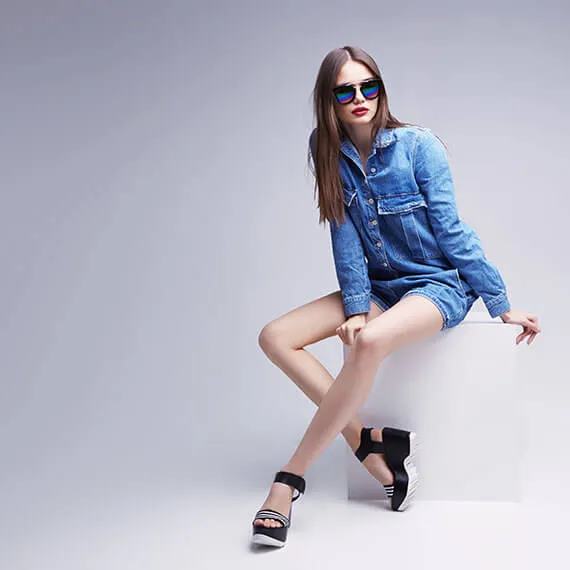An affinity for fashion, subject expertise and a feel for trends. These are the things that set copywriters and translators who create and translate fashion texts apart.
Knowledge of the textile industry is essential for creating linguistically persuasive product descriptions or fashion newsletters and translating them in a way that suits the target country.
Here you’ll learn what you can do to make texts and translations for your online fashion shop better for your customers.
1. Have your product texts written by copywriters
It is best to get a fashion savvy copywriter to write your product texts directly. They will be much better at describing textures, details, fabric and colours.
But why is it important for your copywriter to see the product themselves, if you already send them enough information?
Because it means they won’t have to rely on the descriptions of others, rather they can form their own impressions. In this way, they can highlight everything that particularly stands out for them. And thanks to their experience, they know what makes your product unique and special.
2. Choose a translator whose area of expertise is fashion and textiles
Internationalising an online fashion shop is a challenge and a costly undertaking. Therefore, you should only allow a specialist to do the work because once it’s in the shop, it is incredibly time-consuming to change it again.
Translators, preferably native speakers, who specialise in fashion are absolutely the right people for successfully internationalising your shop. This is because they understand the terminology and the correct form of address for your customers.
3. Give translators access to your product photos
Whether it’s product descriptions, newsletters or shop content: a good fashion translator also needs to see the product that they are translating and describing. A literal translation of your copywriter’s words is often not enough and doesn’t always make sense.
For example, a translator should be able to see a frilled trim in order to describe it in their mother tongue correctly and effectively.
4. Have style guides and manuals created for your online shop content
Experienced fashion writers and fashion translators work from style guides and manuals, so that product descriptions, newsletters and content relate to each other and use the same style of language.
Among other things, the form of address, terminology and punctuation are all set out in a style guide. As an example, should words after a bullet point be capitalised or not?
Your language service provider and, in particular, your language manager will ensure a style guide is created for your online shop in each language. With the information in a style guide, your writers, translators and designers will all be working on the same wavelength.
5. Automate translations for your online fashion shop
Regardless of which shop system you’re working with: Magneto, Oxid, WordPress or another: a connection from your shop system to your language service provider’s content and translation process ensures efficient work flows.
With a pre-determined process, each text doesn’t have to be commissioned individually via e-mail or other media, but can instead move into the translation phase without an additional delay.
Rely on specialists for translations and texts for the fashion industry
As important marketing factors in the fashion industry, fashion catalogues, collection reports, product information and newsletters must be perfectly coordinated with the current collections through creative as well as linguistically and factually flawless texts.
The best fashion texts can be created by writers and translators when they have the product, or at least pictures of the product, in front of them. With style guides and manuals, you can create a unified language which supports your corporate identity.
Together with professional product photos, good texts and translations add significant value for your customers. Because online shoppers like to feel they are being addressed with language, not just with pictures.
Rely on specialists that are well versed in E-commerce, so your fashion content comes across well with your fashion-conscious customers.
